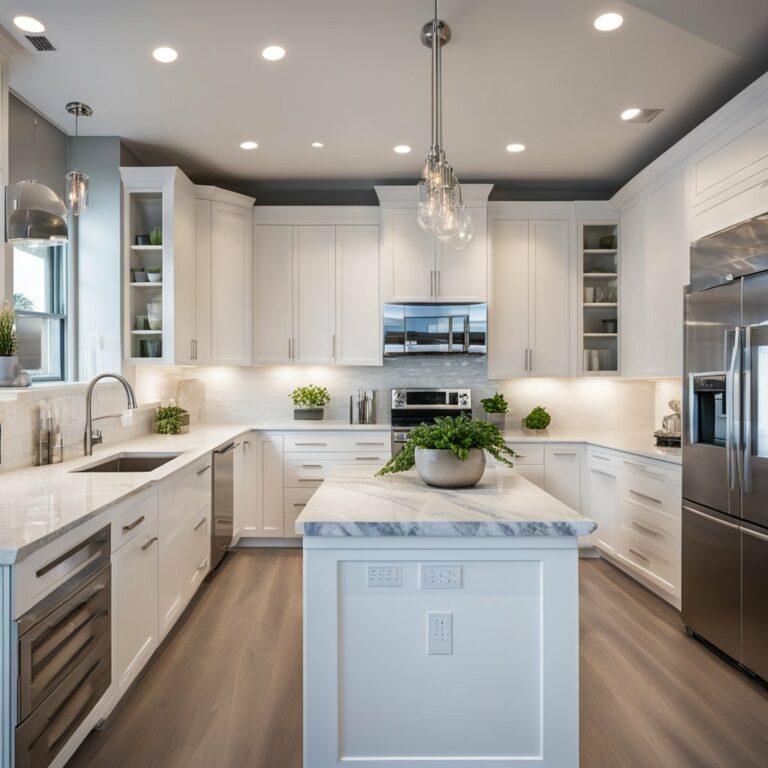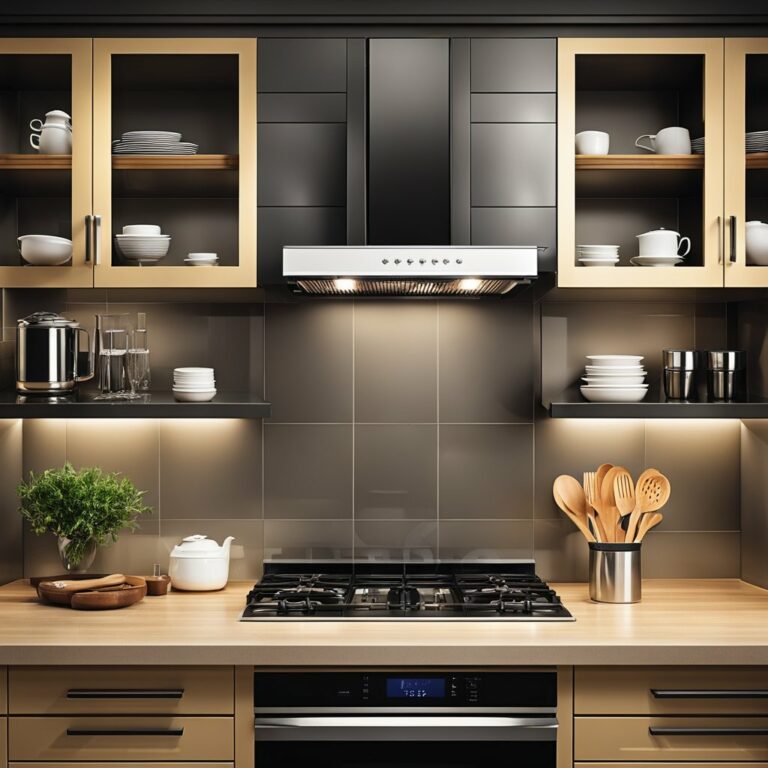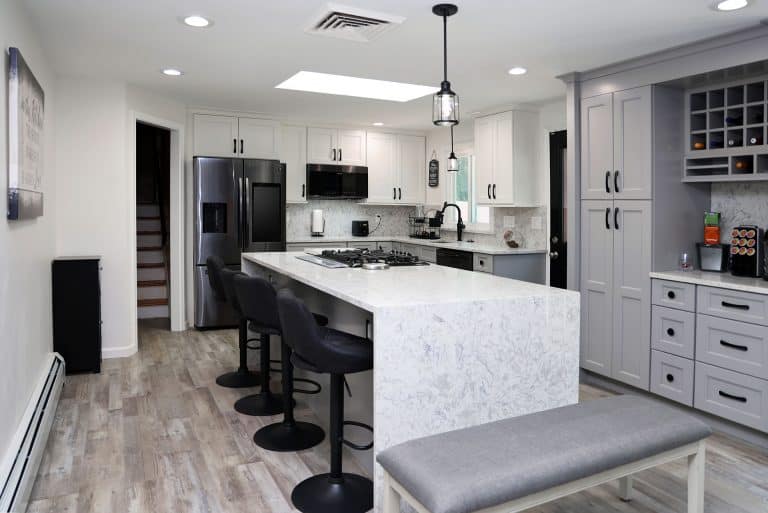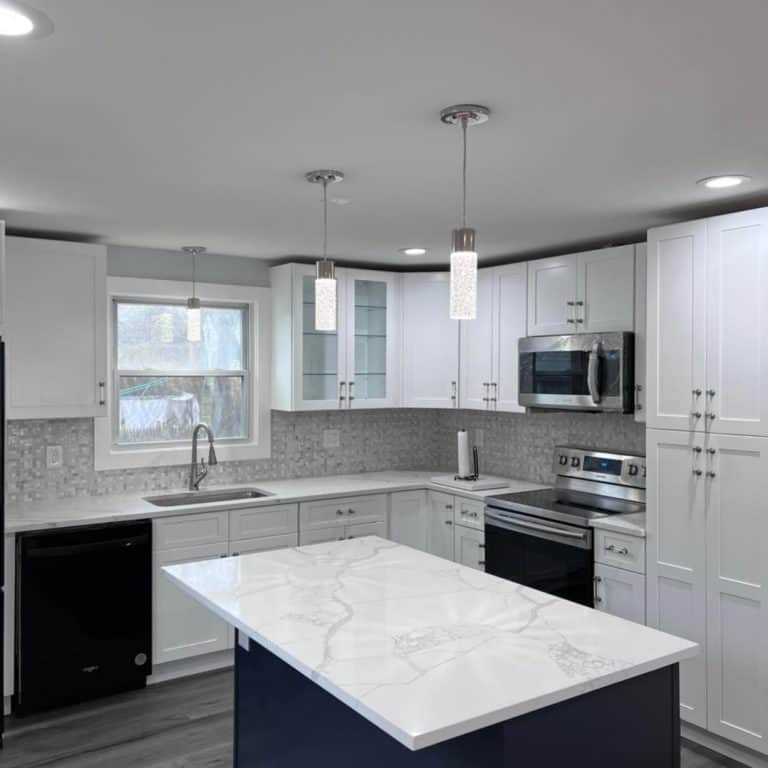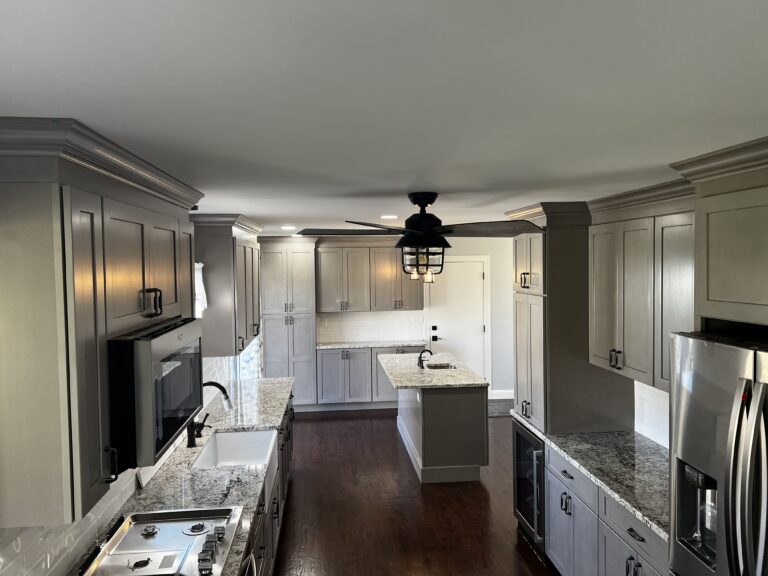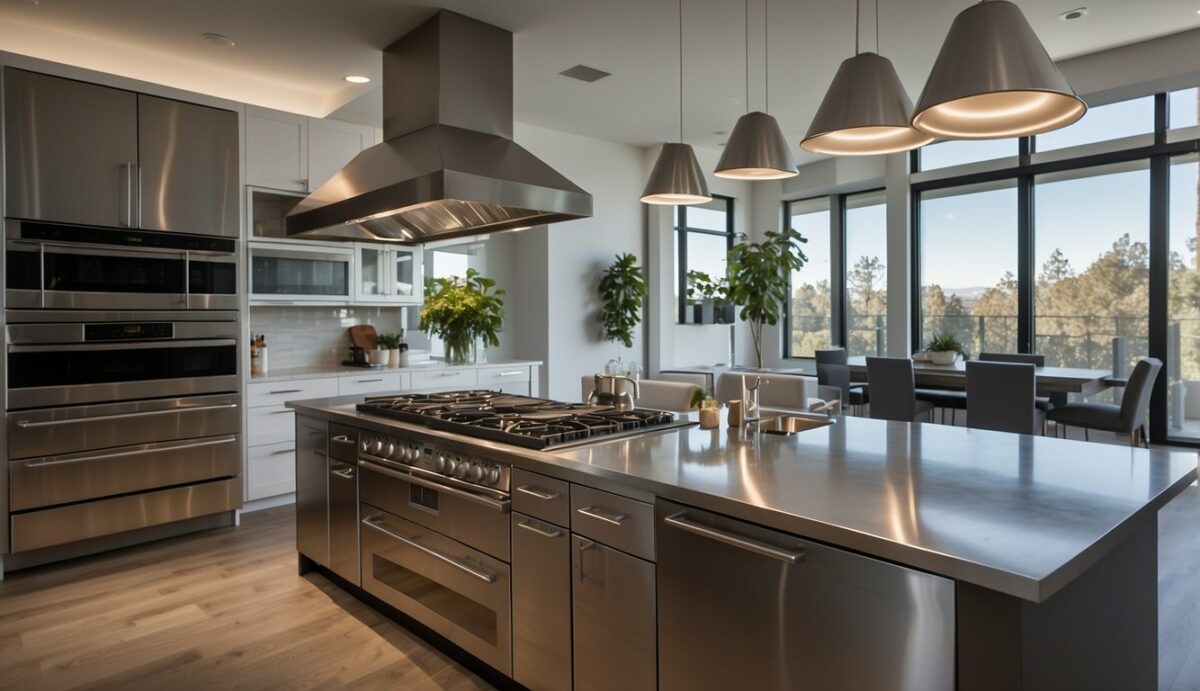
You’ve seen them in glossy magazines and top-notch cooking shows—the kitchen island.
They are a centerpiece of modern home design.
But what makes them more than just a trendy addition? They’re the workhorse of the kitchen, a hub for meal prep, dining, and socializing.
And in this article, you’ll learn a lot more about kitchen islands. We’ll talk about the secrets to their functionality and style and a whole lot more.
An Overview of Kitchen Islands
Let’s start by talking about the role a kitchen island plays in your home.
It’s not merely a place where you chop and mix. It’s the focal point that bridges functionality with social interaction.
And open-concept kitchen designs have ushered kitchen islands into the limelight, making them the heart of both the kitchen and home.
They reflect your personal style while doubling as a multifunctional space.
Adding a kitchen island means you’re going to be getting a versatile and efficient area for various activities. Here are a few examples of how you can use them:
- Meal Preparation: With ample counter space, you’ll find that prepping your meals is easier and more enjoyable.
- Additional Storage: Use the extra cabinets and drawers to keep your kitchen organized and clutter-free.
- Casual Dining: An island often serves as an informal dining spot, perfect for quick meals or morning coffee.
- Enhanced Socializing: It acts as a natural gathering place for family and friends during social events.
Kitchen Island Features
Selecting the right kitchen island comes with considering several factors like size, features, and aesthetics.
You’ll need to contemplate the island’s proportions in relation to your kitchen’s layout to maintain a harmonious balance. And the choice of materials and finishes can either make a bold statement or blend seamlessly with the existing decor.
Features such as built-in sinks or docking stations can amplify its convenience.
Lighting also plays a major role in both aesthetics and functionality, with options ranging from pendant lights to discreet under-cabinet LEDs highlighting the beauty and practicality of your island.
You want to plan for adequate lighting to help with tasks and improve the ambiance of your space.
So, in the following sections, you will learn how to make informed decisions when selecting a kitchen island that not only suits your lifestyle but also enriches your home’s design.
Considerations to Keep in Mind When Adding a Kitchen Island
When you’re considering a kitchen island, flexibility and efficiency often top the list of benefits.
A well-placed island serves as a multipurpose space where you can cook, dine, and socialize.
Imagine having a central hub in your kitchen that can adapt to any scenario – whether you’re hosting a dinner party or simply enjoying a quiet evening at home. Size and placement are important in maximizing your island’s potential.
The recommended clearance zone around an island is 36 to 48 inches for comfortable movement. But larger kitchens may allow for an even more generous layout.
Here are the standard dimensions to keep in mind:
| Feature | Standard Dimension (inches) |
|---|---|
| Clearance Zone | 36-48 |
| Island Height | 36-42 |
| Island Depth (with seating) | 42 or more |
| Island Length (varies greatly) | 24-120 |
You’ll also want to choose materials and designs that complement your kitchen’s style and create a cohesive look.
And whether you opt for a sleek, modern finish or a classic, traditional countertop, the island should tie the room together visually.
The features you select can further optimize your kitchen island’s use.
Consider including appliances such as a sink or a dishwasher to create a secondary working triangle, making your cooking space more efficient.
Or, additional storage options like drawers or spice racks can help keep your tools and ingredients within arm’s reach.
Why Omitting a Kitchen Island May Be Beneficial
While kitchen islands offer numerous advantages, there are scenarios where skipping this feature can actually serve your space and your lifestyle better.
So, weigh the pros and cons of your unique situation.
Consider the size of your kitchen. Because if space is at a premium, adding an island may result in a cramped and less functional environment.
You need at least 36 to 48 inches of clear space around the island for comfortable movement and workflow. If you can’t maintain this clearance, it’s wise to forego the island rather than compromise on your ease of movement.
And, in kitchens where the layout emphasizes a minimalist or streamlined design, an island could disrupt the visual flow.
Instead, focusing on fewer furniture pieces helps maintain a clean, uncluttered look that improves the aesthetic of a contemporary style.
Another consideration is budget constraints.
Kitchen islands can be expensive to install, especially if they require additional plumbing or electrical work for appliances. Your money might be more effectively spent on quality cabinetry or upgraded appliances that will benefit your kitchen’s functionality and resale value.
Entertaining style is also a factor. If you prefer sit-down dinners or more formal gatherings, a dedicated dining area may be more beneficial than an island’s casual seating and dining options.
Finally, open-plan living spaces frequently combine the kitchen with living and dining areas, making a kitchen island somewhat redundant.
In such layouts, multipurpose furniture that can adapt to various activities might serve your space better.
The Impact of a Kitchen Island on Overall Kitchen Design
Functionality isn’t just about the immediate uses of the island—it’s about how it integrates with your work triangle.
This is the area between your stove, refrigerator, and sink.
Adding an island shouldn’t disrupt this flow but rather enhance it. That means careful planning to ensure the placement of the island allows for easy movement and accessibility.
Also, material selection for your island is another aspect that can’t be overlooked. It should complement or contrast your countertop and cabinetry to create a harmonious design.
Here, you’re not simply choosing a practical surface; you’re making a statement. Durable materials like quartz or granite can handle the wear and tear while offering a premium look.
Kitchen Island Design Services in Bloomfield, CT, By Design Scope
When you’re ready to take your kitchen to the next level, consider the personalized kitchen island design services offered by Design Scope in Bloomfield, CT.
With a detailed approach to design, Design Scope guarantees that your vision for a kitchen island not only complements your space but also enhances its functionality.
Our professional team specializes in a broad range of styles, from sleek, contemporary islands to classic, vintage designs.
And before anything we begin by assessing your current kitchen layout to determine how an island can best integrate into the existing space. Because we want to make sure every inch of your new kitchen island is tailored to your preferences and daily needs.
We also provide:
- Custom Designs: Tailored to fit the unique dimensions of your kitchen.
- Material Selection: A variety of choices.
- Smart Storage Solutions: Maximizing space with innovative cabinetry and organizers.
- Integrated Appliances: Seamless inclusion of appliances for a sleek look.
Closing Thoughts
The right kitchen island can transform your space into a hub of functionality and style.
But remember, the key is in the details.
You have to consider many factors when adding a kitchen island. From dimensions to materials and the integration of appliances and storage.
By thoughtfully considering these elements, you’ll guarantee your kitchen island isn’t just a statement piece but a cornerstone of your daily kitchen use.
And whether you opt for the expertise of Design Scope or take the DIY route, your kitchen island has the potential to elevate your culinary experience and the overall flow of your home.

